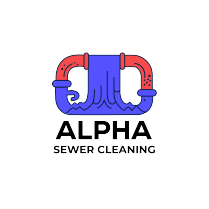24/7 EMERGENCY SERVICES
317 Loring Road Levittown NY 11756
Frozen Pipes

Frozen pipes are a common and potentially severe issue in cold climates. When water inside pipes freezes, it expands, leading to blockages and even burst pipes. This can result in significant property damage and costly repairs. This guide covers the causes, warning signs, how to thaw frozen pipes, and how to prevent them in the future.
Why Do Pipes Freeze?
Pipes freeze when exposed to temperatures below 32°F (0°C) for an extended period. Several factors increase the risk of freezing:
Insufficient Insulation
- Pipes located in unheated areas, such as basements, attics, garages, or crawl spaces, are more vulnerable.
Sudden Temperature Drops
- Rapid drops in temperature can freeze water in pipes before it has time to drain or circulate.
Poor Ventilation
- Drafty areas allow cold air to reach pipes, increasing the likelihood of freezing.
Reduced Water Flow
- Stagnant water in unused pipes is more prone to freezing than flowing water.
Signs of Frozen Pipes
No Water Flow
- Water flow stops or significantly slows in faucets or fixtures.
Frost on Pipes
- Visible frost or ice on the exterior of exposed pipes.
Unusual Sounds
- Whistling, clanking, or gurgling noises may indicate a frozen section.
Bulging Pipes
- Pipes may appear swollen, indicating ice buildup inside.
Foul Odors
- A sewer smell may come from drains if the frozen blockage prevents proper venting.
How to Thaw Frozen Pipes Safely
1. Locate the Frozen Section
- Check exposed pipes near exterior walls or in unheated spaces.
- Look for frost, bulges, or areas that feel exceptionally cold.
2. Open Faucets
- Turn on the affected faucet slightly to allow melting water to flow and relieve pressure.
3. Apply Heat
- Hair Dryer: Move the dryer back and forth over the pipe. Avoid prolonged heating in one spot.
- Heating Pad: Wrap a heating pad around the pipe and set it to low or medium.
- Hot Towels: Soak towels in hot water, wring them out, and wrap them around the pipe.
- Space Heater: Use a portable heater in the room where the pipe is located.
4. Avoid Dangerous Methods
- No Open Flames: Never use a blowtorch, propane heater, or any device with an open flame.
- No High-Pressure Water: Forcing hot water through frozen pipes can cause bursts.
5. Start Near the Faucet
- Always begin heating the pipe closest to the faucet to prevent pressure buildup.
What to Do if a Pipe Bursts
Turn Off the Water Supply
- Locate the main water shutoff valve and turn it off immediately.
Drain the System
- Open faucets to drain remaining water and reduce pressure.
Contain the Damage
- Use buckets, towels, or wet/dry vacuums to minimize water damage.
Call a Professional
- Contact a plumber to assess and repair the damage.
Preventing Frozen Pipes
1. Insulate Pipes
- Use foam pipe insulation or heat tape on pipes in unheated areas.
- Insulate crawl spaces, attics, and basements to maintain warmer temperatures.
2. Seal Cracks and Gaps
- Use caulk or insulation to seal gaps around windows, doors, and vents near pipes.
3. Keep Heat Consistent
- Maintain a consistent indoor temperature of at least 55°F, even when away from home.
4. Let Faucets Drip
- Allow a slow drip from faucets connected to exposed pipes during extreme cold.
- Moving water is less likely to freeze.
5. Open Cabinet Doors
- Open cabinets under sinks to allow warm air to circulate around pipes.
6. Disconnect Outdoor Hoses
- Drain and disconnect garden hoses to prevent freezing in exterior pipes.
7. Install Freeze Alarms
- Use smart sensors or alarms to monitor temperature and detect freezing conditions.
When to Call a Professional
Inaccessible Pipes
- If frozen pipes are hidden behind walls or ceilings, professional tools are required.
Persistent Freezing
- Pipes that freeze repeatedly may need rerouting or better insulation.
Major Leaks or Bursts
- Emergency plumbing services are necessary to prevent further damage.
Sewer Line Freezing
- Specialized equipment, like steam machines, may be required to clear frozen sewer lines.
Cost of Repairing Frozen Pipes
DIY Thawing
- Minimal cost if successful, typically under $20 for supplies.
Professional Thawing
- $100–$400, depending on accessibility and severity.
Pipe Replacement
- $1,000–$4,000 for extensive damage or replacing multiple pipes.
Water Damage Repair
- $1,000–$10,000 depending on the extent of the damage and affected areas.
Environmental Considerations
Minimize Energy Use
- Use energy-efficient insulation and heating solutions to reduce overall energy consumption.
Proper Disposal of Burst Pipe Materials
- Recycle old pipes and insulation where possible.
Conclusion
Frozen pipes are a serious concern during winter months but can often be avoided with proper precautions. Acting quickly to thaw frozen pipes and prevent them from bursting can save significant time, money, and stress. By insulating pipes, maintaining a warm home, and addressing vulnerabilities, you can keep your plumbing system functional and avoid costly repairs during cold weather.
Newsletter
Drain cleaning involves removing clogs, debris, and buildup from pipes to restore proper water flow. It ensures smooth drainage, prevents blockages, and protects plumbing systems from damage. Professional drain cleaning uses tools like hydro jetting or augers for efficient and lasting results.
Design By Oll Solutions

